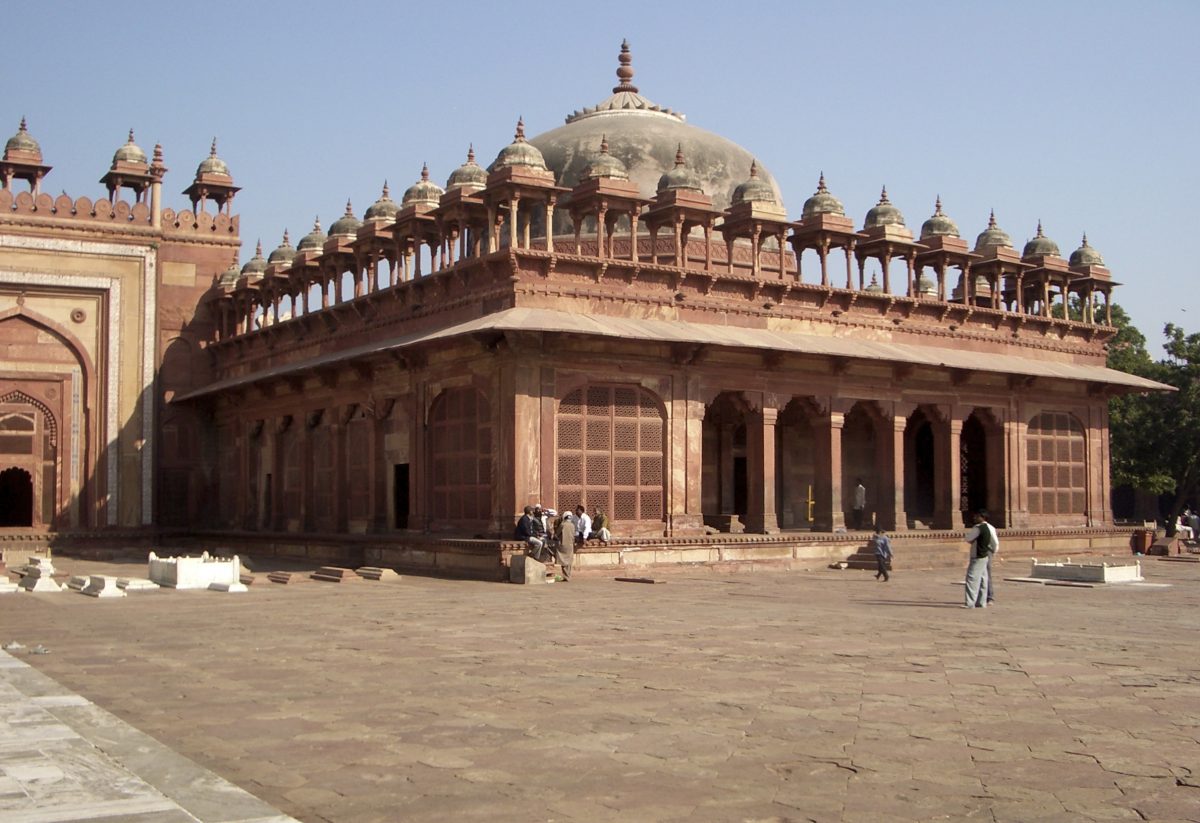Introduction:
The rich cultural heritage of India encompasses a myriad of architectural marvels that showcase the harmonious blend of different artistic styles. Among these gems, the Jama Masjid in Fatehpur Sikri stands tall as a magnificent testament to the fusion of Indo-Islamic architecture. With its grand entrance gate and awe-inspiring prayer hall, this mosque exemplifies the intricate craftsmanship and architectural brilliance of the Mughal era. Let us embark on a virtual journey to unravel the beauty and significance of the Jama Masjid in Fatehpur Sikri.
A Glimpse into History:
Commissioned by Emperor Akbar the Great, the Jama Masjid was constructed between 1571 and 1572 CE. The mosque was an integral part of the larger city of Fatehpur Sikri, a planned capital during Akbar’s reign. The city itself was a visionary amalgamation of Persian, Indian, and Central Asian architectural influences. The Jama Masjid played a central role in the religious and cultural life of the city, offering a place of worship for the Mughal court and the local populace.
Grand Entrance Gate:
Approaching the Jama Masjid, one is greeted by the magnificent Buland Darwaza, a towering gateway that serves as an architectural masterpiece. Built with red sandstone and embellished with intricate carvings and calligraphy, the Buland Darwaza is an imposing structure that leaves visitors in awe. It is adorned with verses from the Quran, showcasing the strong Islamic influence in the design.
The Serene Prayer Hall:
Stepping through the Buland Darwaza, one enters the spacious courtyard of the Jama Masjid, which is lined with arcades and adorned with marble inlays. The central prayer hall, or the main mosque, is an architectural marvel, designed to accommodate a large congregation. Its unique blend of Islamic and Indian architectural elements is evident in the elegant arches, intricately carved pillars, and delicate marble lattice work.
The prayer hall, constructed primarily with red sandstone, is crowned with three grand domes that create an awe-inspiring skyline. The domes are adorned with stunning geometric patterns and calligraphy, showcasing the mastery of the Mughal artisans. The beauty of the Jama Masjid lies not only in its exterior grandeur but also in the peaceful ambiance it provides for devotees and visitors alike.
Intricate Details and Symbolism:
As with many Indo-Islamic architectural wonders, the Jama Masjid is adorned with intricate details and symbolism. The exquisite carvings and geometric patterns found throughout the mosque reflect the cultural fusion between Islamic art and Indian craftsmanship. Floral motifs, arabesques, and calligraphy adorn the walls, showcasing the artistic prowess of the Mughal artisans.
The symmetrical layout of the prayer hall, with its clearly defined spaces for prayer and ablution, is a testament to the meticulous planning and attention to detail. The use of marble screens, known as jalis, allows for the interplay of light and shadow, creating a serene and tranquil atmosphere within the prayer hall.
Preserving Cultural Heritage:
The Jama Masjid in Fatehpur Sikri is not just an architectural masterpiece but also a living testament to the cultural and religious history of India. The preservation and conservation efforts undertaken to maintain this historic site ensure that future generations can appreciate and learn from its grandeur.
Visiting the Jama Masjid:
A visit to the Jama Masjid in Fatehpur Sikri is a journey back in time, offering a glimpse into the splendid era of the Mughals. As you explore the mosque’s intricate architecture, take a moment to reflect on the cultural fusion and artistic brilliance that defines the Indo-Islamic architectural style.
Conclusion:
The Jama Masjid in Fatehpur Sikri stands as an iconic representation of Indo-Islamic architecture, blending the artistic sensibilities of two great civilizations. Its grand entrance gate, the Buland Darwaza, and the stunning prayer hall are testaments to the mastery and creativity of the Mughal craftsmen. The mosque’s intricate details, delicate carvings, and symbolic motifs make it a truly awe-inspiring destination for history enthusiasts, art lovers, and spiritual seekers alike. A visit to this architectural wonder is sure to leave an indelible mark, resonating with the grandeur of India’s glorious past.
